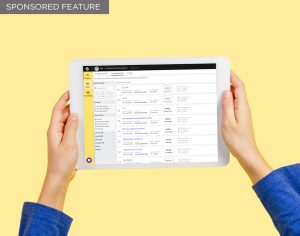It feels good to look to the future with a sense of optimism again after the uncertainty triggered by the pandemic. Thanks to the success of the vaccine programme, the disruption caused by lockdown is hopefully a thing of the past, and SMEs can start to plan ahead.
As we gradually get back to business as usual, the outlook has brightened. According to its latest report, the Bank of England (BoE) expects the UK economy to make a strong recovery in 2021. The BoE estimates the economy will grow by 7.25% this year (compared to 5% in its February report), the fastest level in nearly 70 years. Among the key drivers are people taking advantage of the easing of restrictions to spend some of the cash they saved during lockdown and budget policies like the Super Deduction scheme encouraging business investment. There was more good news for the economy as the BoE’s chief economist Andy Haldane claimed the forecast was a little on the conservative side and that higher-than-expected demand could boost growth even further.
That said, after a tough year many high street banks are reviewing their lending policies. Here at Swoop, we’ve heard from clients who tell us their providers are cutting back on their invoice finance facilities or asking them to consider alternative products at a time when flexibility is critical. Customers are also under pressure to file their annual accounts early rather than wait until the end of their financial year so lenders can review them and adjust their credit lines if necessary.
While credit might be tightening among the high street banks, you can always apply to alternative lenders. Many retreated from the market because they couldn’t compete with the favourable terms offered by government schemes such as the Coronavirus Business Interruption Loan Scheme (CBILS) and Bounce Back Loan Scheme (BBLS). They subsequently built-up considerable reserves which they’re now eager to put to work. That should help fill the gap left by the traditional lenders.
The products offered by alternative lenders also tend to provide greater flexibility than fixed term loans, which many SMEs will welcome as they seek to strengthen their finances after lockdown. One such product is revenue-based lending which relies on card data to assess applications. Providers use pre-Covid transactions to forecast future revenues and then set repayments based on that forecast.
Another trend we’ve noticed is rising demand for unsecured term lending, so we’re excited to announce that we’ll shortly be adding one of Europe’s largest investment banks to our pool of lenders. You can access between £500,000 and £5 million for growth or transactions with repayment periods of up to eight years.
Finally, the Chancellor recognised that some SMEs may still need support despite the return to normal, so he replaced CBILS and BBLS with the Recovery Loan Scheme (RLS) in March’s Budget. You can apply for up to £10 million through RLS across various products like term loans, overdrafts and asset finance. The terms aren’t as favourable as its predecessors, as RLS doesn’t offer an interest rate payment holiday and borrowers are subject to credit checks, but it’s available until the end of the year.
If you would like to explore and discuss the finance opportunities available to your business, simply get in touch with Swoop today.
“
Share via:








































